THE POLICY CONTEXT
The industrial water management system in the PRC is spread over two phases (see Figure 1). The first phase is "before-process", which means the management before construction and production. The second phase is "in-process", which means the management during production. Before initiating an industrial development, the enterprises must pass an environmental impact assessment to qualify for a permit. In this phase, the government can also consider whether the project is prohibited according to the Instruction on Elimination of Backward Capacity.10 After receiving a permit, the enterprises must follow the "Three Simultaneity" principle during the building process, implying the facilities for pollution control must be designed, constructed and used at the same time with the main facility. Therefore, in this phase, the ways of management mainly follow the principle of pollution prevention.
In the production process, the Cleaner Production Promotion Law encourages enterprises to adopt cleaner technologies, use environmentally friendly materials, and produce greener products.Required by this law, enterprises in key industries, e.g. textile industry, must perform cleaner production auditing to quide the production process towards cleaner production. Accordingly, the national government releases Guidance on Cleaner Production Technologies in Key Industries almost annually. End-of-pipe treatment involves emission standards and the Environmental Emission Permits System, comprising of an environmental tax, pollution discharge permit and emissions trading system.
The PR's policy instruments can be divided into three distinct categories: information, market-based and command/control. When put in practice, these policy instruments act on two levels, with affirmative actions and restraining actions. Information instruments refer to policies which include the government's attempts to influence people through communication, transfer of knowledge and advocacy through the distribution of government-led inventory, data collection and guidebook compilation to industries and consumers.Market-based mechanisms include grants, loans, taxes, fines and other user charges. They embody the 'polluter pays' approach, which dictates that those who produce pollution should bear the costs of managing it. Lastly, command/control instruments are used to define, monitor and manage polluting behaviours and practices, which are applied in the form of permits, licenses and rules. The result of regulation mostly depends on the authority and ability of the government to exercise direct command and control over the industry. Further, affirmative actions like financial incentives, for example, are used when the government wishes to encourage specific behaviour. Contrastingly, restraining actions are used to punish behaviours that do not conform with the government's agenda. Section 3 elaborates on some of these policy instruments, along with some lessons learned from these policy experiences.
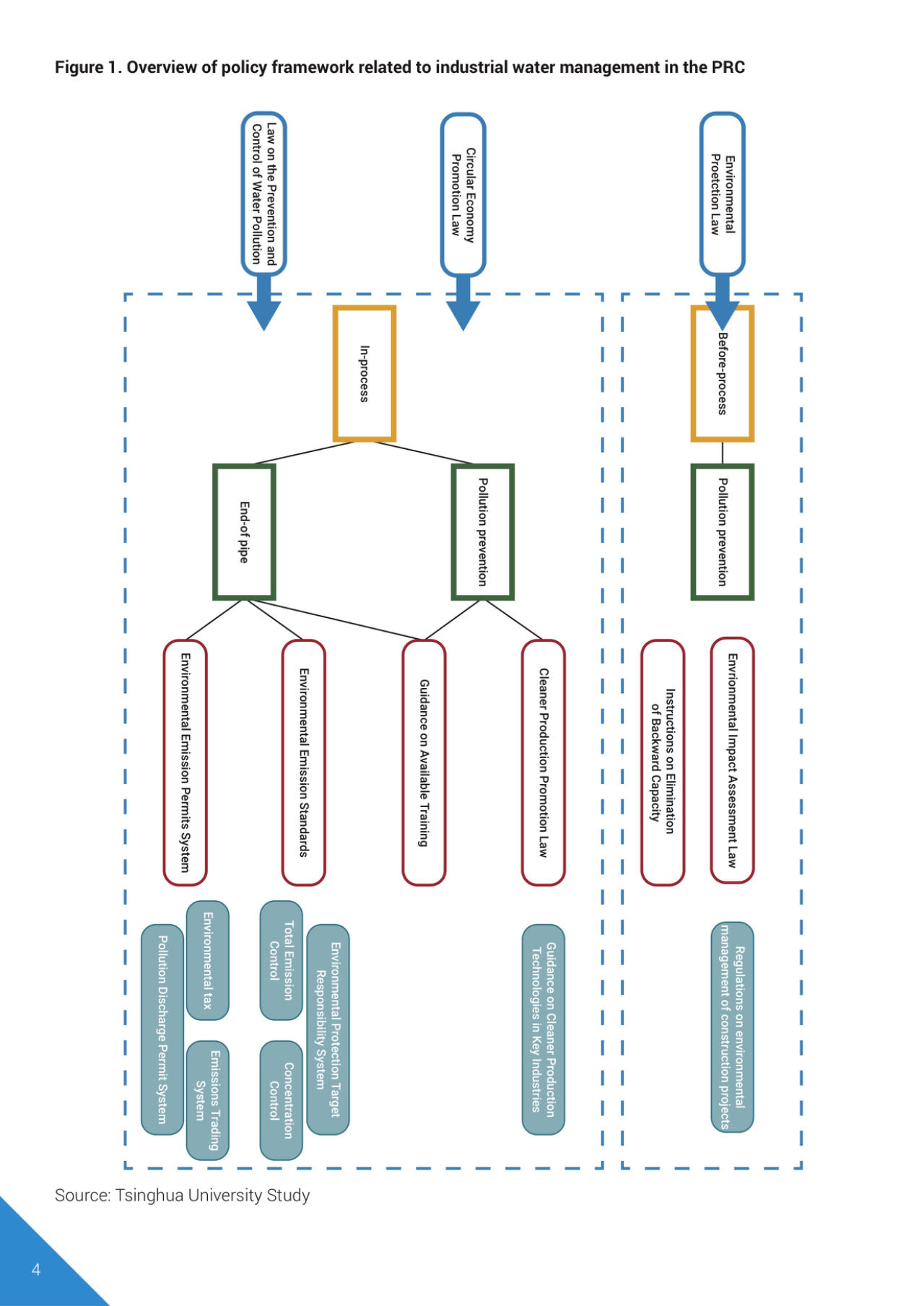
WATER TEN, A HOLISTIC POLICY PACKAGE
While the PRC's ability to develop, adapt, review and adjust their environmental policies showed both commitment and power, there was an element of coordination and streamlining absent from the PRC environmental policy agenda. The PRC's environmental policy challenges then became about ensuring government-wide consistency and coherence among policy instruments. This evolution in policy thinking comes from central tenants in environmental policymaking, recognizing that environmental issues cannot be addressed independently from one another, and that environmental impacts are not just a result of end user emissions, but rather the entire supply chain.With this recognition came the initiative to champion Water Ten, a new age policy package that enforced the cooperation of 12 central ministries across the PRC government to act in a coordinated effort to control pollution.
Water Ten encompasses a menu of information, market-based and command/control mechanisms in a concerted fashion to exercise control over industrial water pollution. Water Ten maps out a set of concerted actions to be carried out by 12 ministries under the State Council in the next 10 to 15 years with the ambition (see table 1 of Annex) to overcome the root causes of the severe water risks and stresses accumulated over the past decades, including limited management capacities; lack of technological and financial support; and lax laws and requlations with weak institutions and enforcement.30 Water Ten commands the entire water pollution policy. The main policy provisions in Water Ten are illustrated in Figure 2 (see annex Table 2 for more details on each of these provisions).Some of the main innovations introduced by WaterTen are discussed in Box 4.
As previously mentioned, to implement a polluter pay principle, several steps are imperative to successful implementation, those being monitoring and enforcement. Previously the PRC experienced multiple challenges in this regard, including but not limited to corruption, monitoring technology, legal awareness and reliable data (see table 2). When the Water Ten policy package was introduced, one of its main tenants was to strengthen the implementation of the polluter pays principle, through the tightening of environmental enforcement and supervision and stricter accountability regimes.
The implementation of the Water Ten package has already started showing results in termsof improvement of water quality over the past few years. According to the "2017 Bulletin of the State of the Environment of China" 31 the share of surface water qualifying Grade I-Ill standards rose from 64.5 per cent in 2015 to 67.9 per cent in 2017, and the share of surface water inferior to Grade V standard dropped from 8.8 per cent to 8.3 per cent during the same period. Despite the modest improvement, there is still a substantive work reguired in order to reach the ambitious target of over 70 per cent of Grade I-Ill and less than 5 per cent of inferior Grade V surface water by 2020, as set in China's 13th Five-Year Plan (2016-2020).32 However, a more thorough assessment of the policy is needed in order to understand the contribution of Water Ten on water pollution reduction in China.
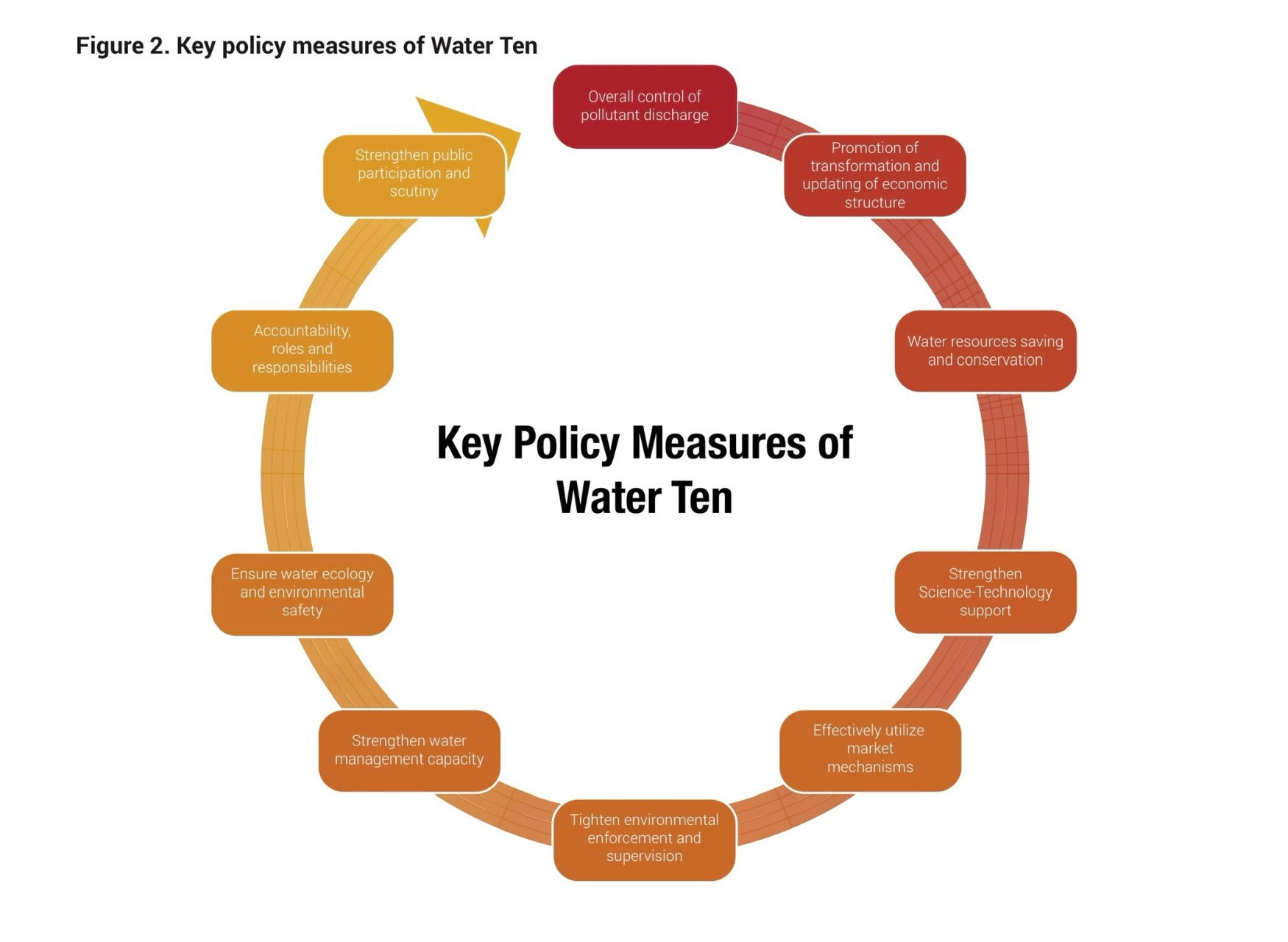
HOW IT WORKS AND ITS IMPACT
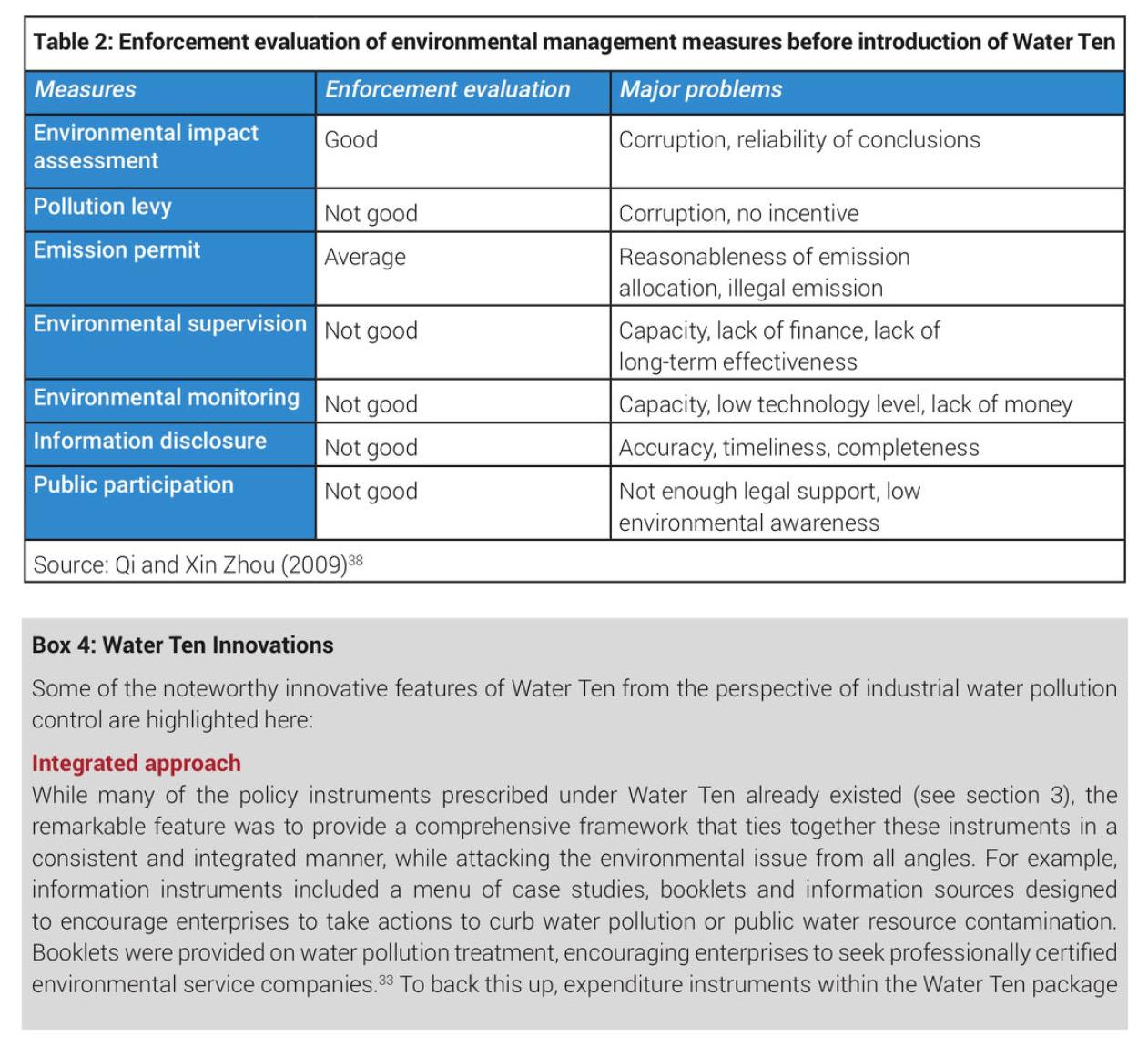
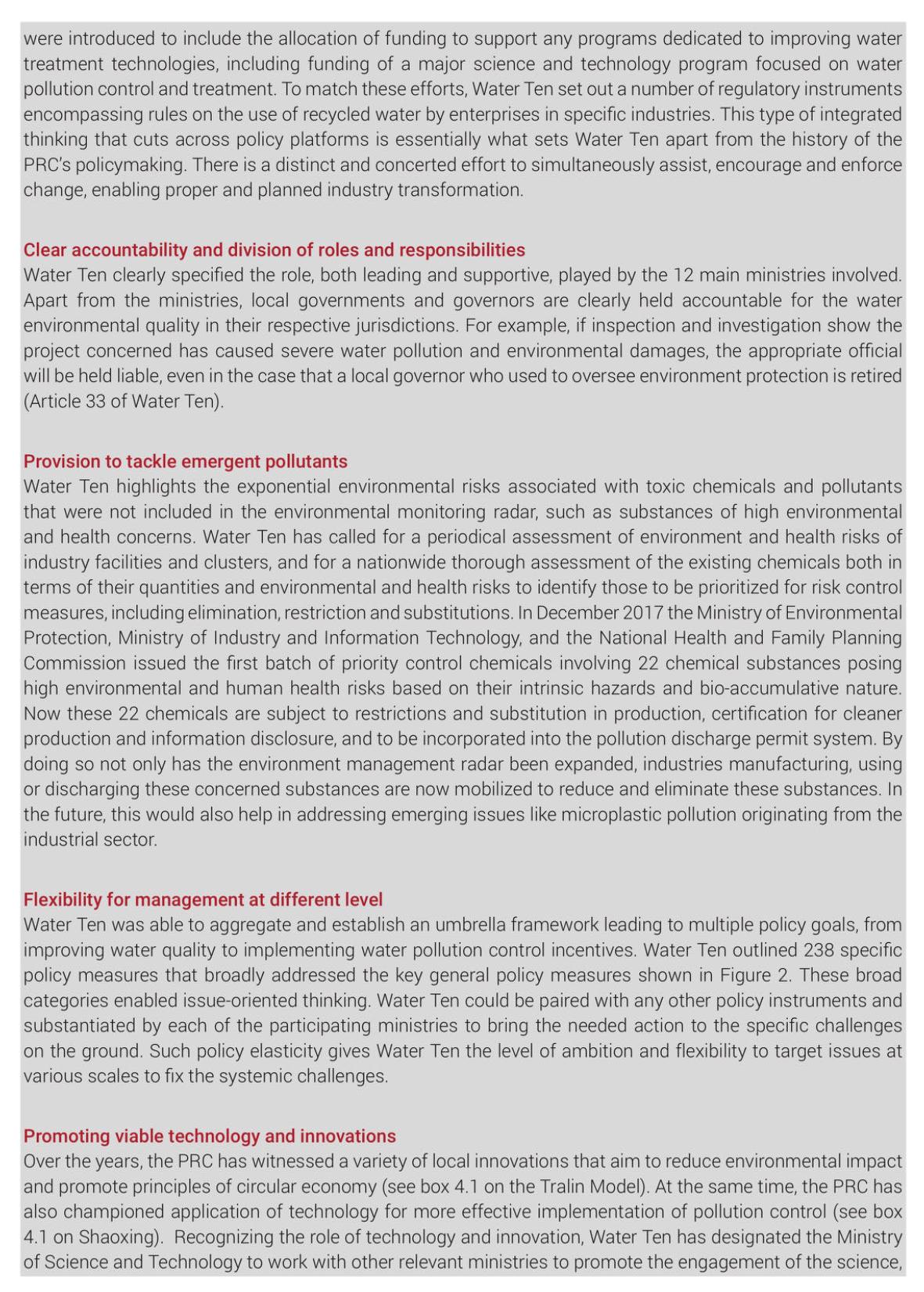
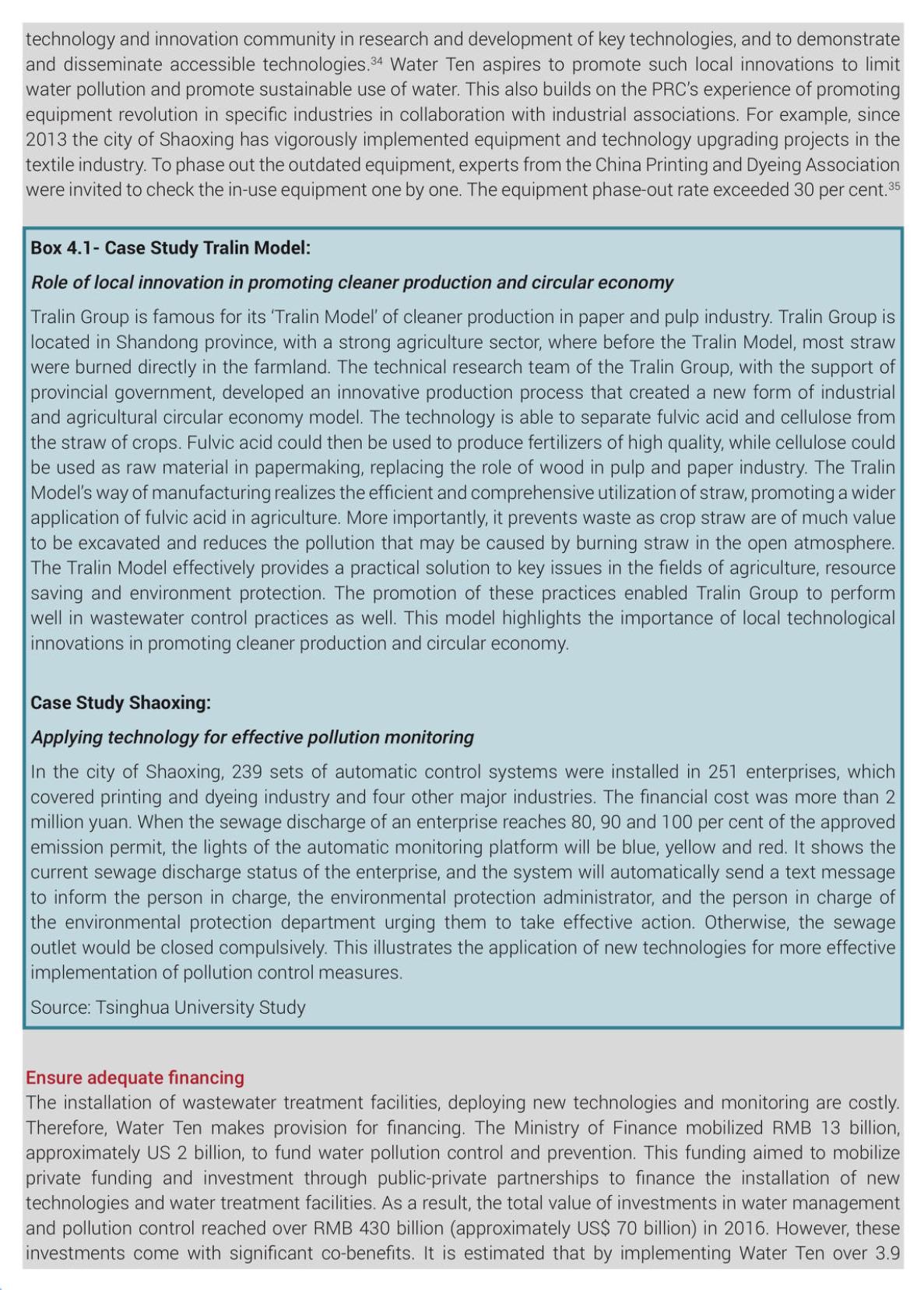
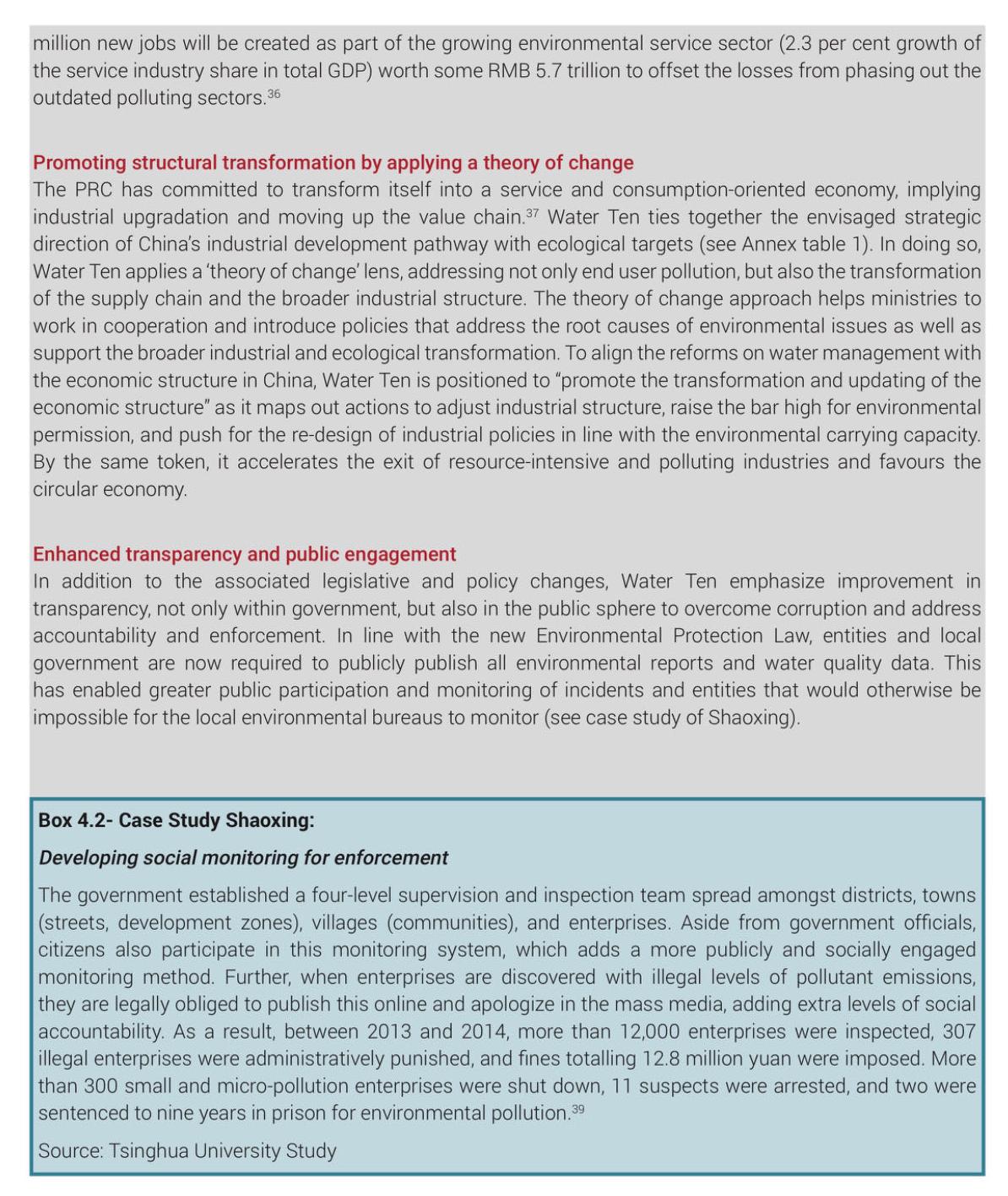
CONCLUSION
This policy brief explored the experience of China in lImiting water pollution and promoting sustainable water usage in the industrial sector. The PRC experimented with various policy instruments over the years, with varying degree of success. The adoption of the Water Ten policy package is an amalgamation of the learnings over the years. It emphasises the role of legislation, an integrated approach towards policy formulation founded on a theory of change and the need for enforcing the polluter pays principle. The experience also revealed that any policy framework at the national level should have flexibility to target issues at various scales to fix the systemic challenges. To strengthen enforcement of environmental policies, the PRC experience also highlights the importance of giving additional powers to executive branches of government powers, promoting transparency of pollution data from both enterprises and governments, and actively engaging the public in pollution monitoring. These policy experiences from the PRC, as highlighted in this policy brief, offer valuable lessons for other developing countries envisaging industrial expansion, offering an opportunity for South-South learning in the era of industrial Asia.
ANNEX

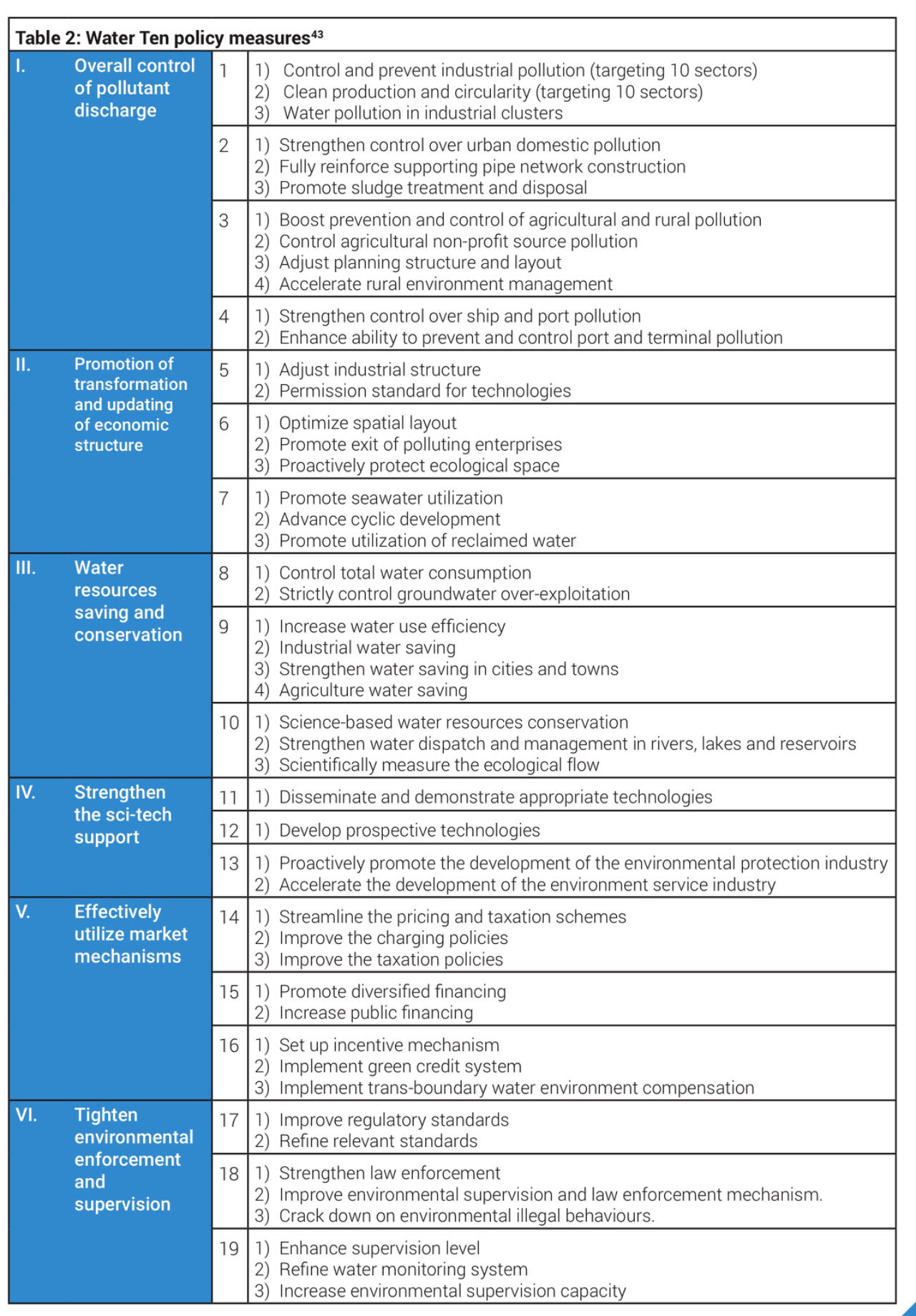
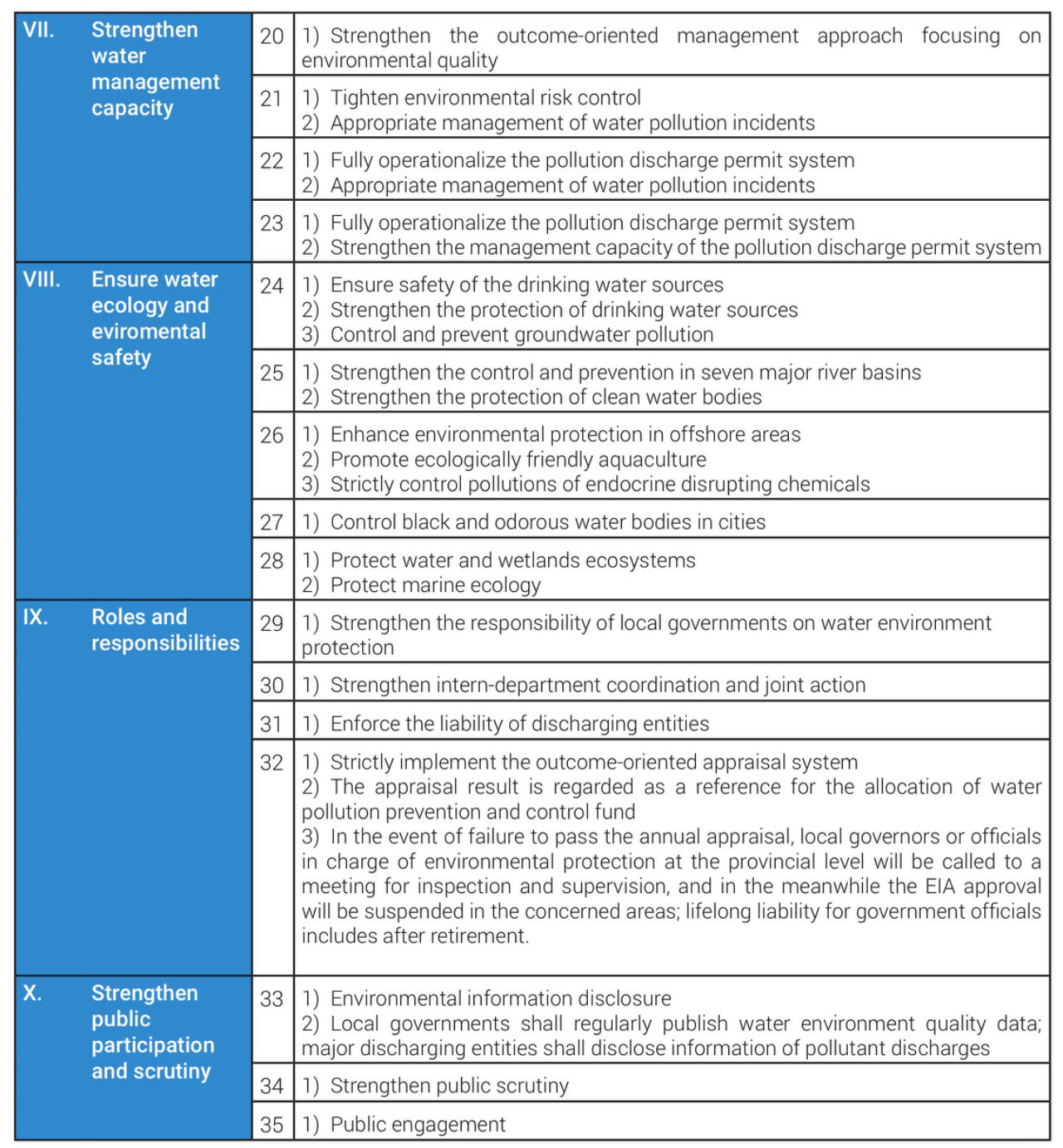
- Pollution Tackling Policy Water Thepollution tackling policy water pollution tackling china water pollution policy combat water pollution policy solve the pollution strategy tackling chinese pollution water contamination address policy water regulations pollution solve water pollution resource water china pollution measures solve water